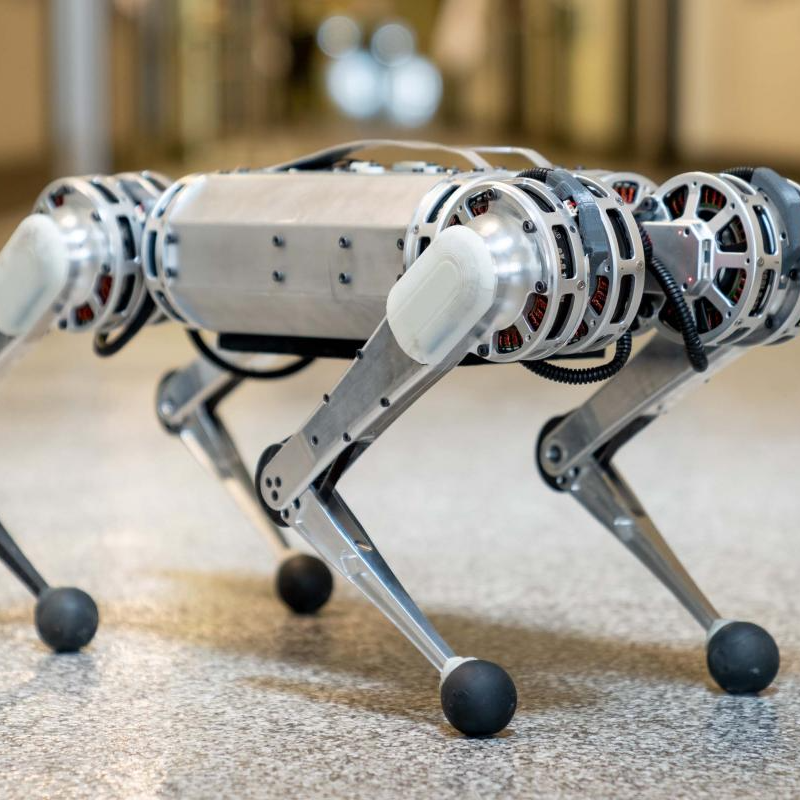Biomimicry in Robotics: Learning from Nature's Designs
Sunday, 12 November,2023
Introduction
In the ever-evolving field of robotics, scientists and engineers have turned to nature as a source of inspiration. Biomimicry in robotics, the practice of emulating nature's designs and processes, has revolutionized the way we develop robotic technology. This article delves deep into the world of Biomimicry in Robotics: Learning from Nature's Designs and how it's shaping the future of robotics.
The Wonders of Biomimicry in Robotics
Biomimicry in Robotics: Learning from Nature's Designs
Biomimicry in robotics, also known as biomimetics, is the art of imitating nature's biological systems and structures to enhance the capabilities of robots. This concept has resulted in groundbreaking innovations, allowing robots to mimic the grace and efficiency of animals, insects, and plants. It's a captivating journey that bridges the gap between nature and technology.
Nature as the Ultimate Teacher
Nature has spent millions of years perfecting its designs, making it the most exceptional teacher for roboticists. By observing and imitating natural systems, robotics researchers have made tremendous strides in creating robots with enhanced mobility, adaptability, and energy efficiency.
The Biomimicry Process
Biomimicry begins with keen observation. Scientists study animals, plants, and their behaviors to understand their unique mechanisms. Then, they apply these observations to develop robotic prototypes, making incremental improvements with each iteration.
Real-World Applications
Biomimicry in robotics has led to robots that can mimic the movement of animals, such as cheetahs and birds. These robots have practical applications in fields like search and rescue, environmental monitoring, and even space exploration.
Biomimicry Inspirations
Taking Flight: The Inspiration of Birds
Birds have long been a source of inspiration for robotics engineers. By studying avian flight, researchers have created drones and robots that can maneuver through the air with agility and grace.
The Art of Camouflage: Learning from Chameleons
Chameleons are renowned for their remarkable camouflage abilities. This has inspired the development of adaptive camouflage technology, allowing robots to blend seamlessly with their surroundings.
Beneath the Waves: Lessons from Marine Life
Marine animals, like fish and octopuses, have inspired underwater robots that can navigate complex aquatic environments with precision. This is a boon for marine exploration and environmental research.
FAQs
How does Biomimicry benefit robotics?
Biomimicry in robotics enhances the performance and capabilities of robots by emulating nature's designs and systems. This approach improves mobility, adaptability, and energy efficiency, leading to more efficient and versatile robots.
Can you provide an example of Biomimicry in robotics?
Certainly! One example is the development of robots inspired by cheetahs. By mimicking the cheetah's gait and agility, engineers have created robots that can navigate rough terrains with ease, making them ideal for search and rescue missions.
What practical applications does Biomimicry have in robotics?
Biomimicry has practical applications in search and rescue operations, environmental monitoring, space exploration, and more. Robots inspired by nature's designs can excel in tasks that require adaptability and precision.
How is Biomimicry used to improve robotic camouflage?
Biomimicry takes cues from chameleons' remarkable camouflage abilities. This has led to the development of adaptive camouflage technology, allowing robots to blend seamlessly with their surroundings for various applications.
What role does Biomimicry play in marine robotics?
Biomimicry has significantly contributed to marine robotics, enabling robots to navigate complex aquatic environments with the grace of marine life. This is crucial for underwater exploration, research, and environmental monitoring.
Is Biomimicry a sustainable approach in robotics?
Yes, Biomimicry promotes sustainability by learning from nature's efficient and sustainable designs. It helps reduce energy consumption and environmental impact in the field of robotics.
Conclusion
Biomimicry in robotics is a fascinating field that exemplifies the harmony between nature and technology. By drawing inspiration from the natural world, we've unlocked new possibilities for robotics, leading to more agile, adaptable, and energy-efficient robots. As we continue to explore the wonders of Biomimicry, the future of robotics holds even more exciting breakthroughs.
